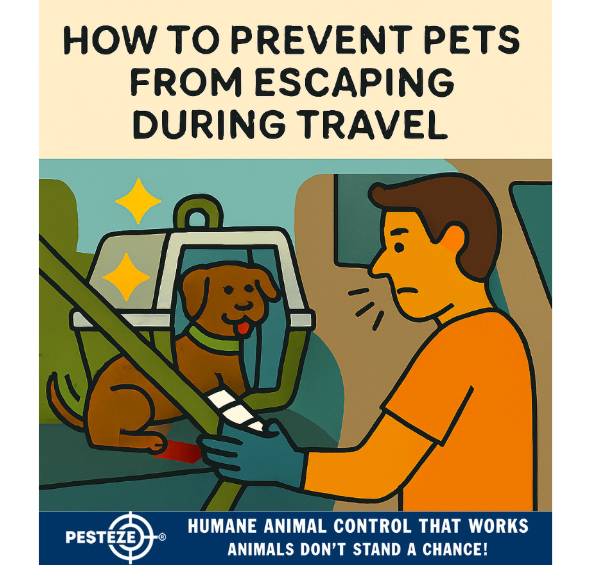HOW TO PREVENT PETS FROM ESCAPING DURING TRAVEL

HOW TO PREVENT PETS FROM ESCAPING DURING TRAVEL
SUMMARY
Traveling with pets can be a joyful experience, but it also comes with risks—especially the possibility of escape. Whether you're flying, driving, or walking through a busy terminal, pets may panic and flee if not properly secured. This guide offers essential strategies to prevent pets from escaping during travel, including gear recommendations, behavioral tips, and safety protocols. With preparation and vigilance, you can ensure your pet stays safe and close throughout the journey.
FEATURES
-
Choose Secure Carriers and Crates: Use airline-approved, escape-proof containers with locking mechanisms.
-
Double-Check Leashes and Harnesses: Ensure all gear fits snugly and is in good condition before departure.
-
Practice Travel Routines at Home: Familiarize your pet with carriers, car rides, and travel sounds to reduce anxiety.
-
Use Identification and GPS Tags: Equip your pet with a microchip, ID tag, and GPS tracker for added security.
-
Monitor Transitions Closely: Stay alert during loading, unloading, and rest stops—these are high-risk moments.
-
Keep Calm and Minimize Stress: Reduce noise, crowds, and sudden movements to prevent panic-driven escapes.
GUIDE DESCRIPTION
Traveling with pets requires more than just packing their food and toys—it demands a proactive approach to safety. One of the biggest risks during travel is escape, which can happen in seconds if your pet is startled or improperly secured. This guide helps you prevent such incidents with practical, proven strategies.
Start by selecting the right carrier or crate. It should be sturdy, well-ventilated, and equipped with secure latches. For air travel, choose airline-approved models that meet size and safety standards. For car trips, use seatbelt-compatible crates or pet seat harnesses to keep your pet restrained.
Check all leashes, collars, and harnesses for wear and tear. A loose buckle or frayed strap can fail under pressure. Make sure the fit is snug but comfortable, and consider using a double leash system for extra control.
Before the trip, practice travel routines at home. Let your pet explore the carrier, take short drives, and expose them to travel-related sounds. This reduces anxiety and helps them feel more secure during the actual journey.
Identification is crucial. Ensure your pet wears a collar with an ID tag and is microchipped with up-to-date contact information. GPS trackers offer real-time location updates in case of an escape.
Pay close attention during transitions—boarding, rest stops, and hotel check-ins are common escape points. Keep your pet leashed and contained at all times, and never open a carrier in an unsecured area.
Finally, keep the environment calm. Loud noises, crowds, and sudden movements can trigger panic. Speak softly, maintain a steady pace, and offer treats or toys for comfort.
By following these steps, you’ll greatly reduce the risk of your pet escaping and ensure a safer, smoother travel experience.
- Amy Chang


Comments 0